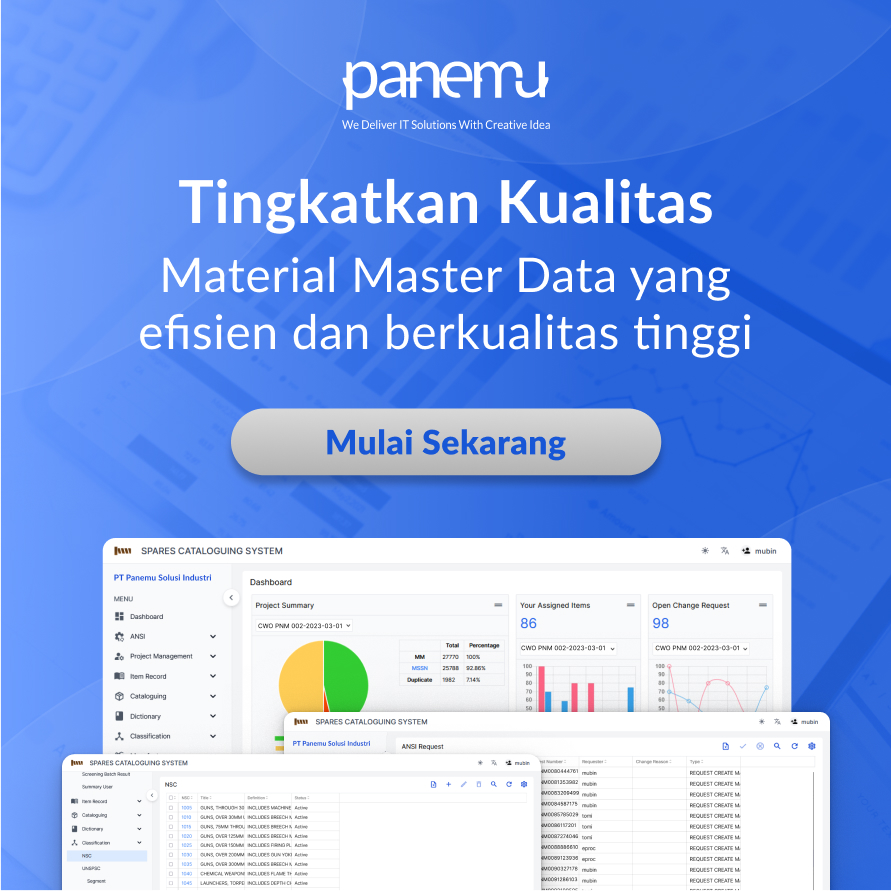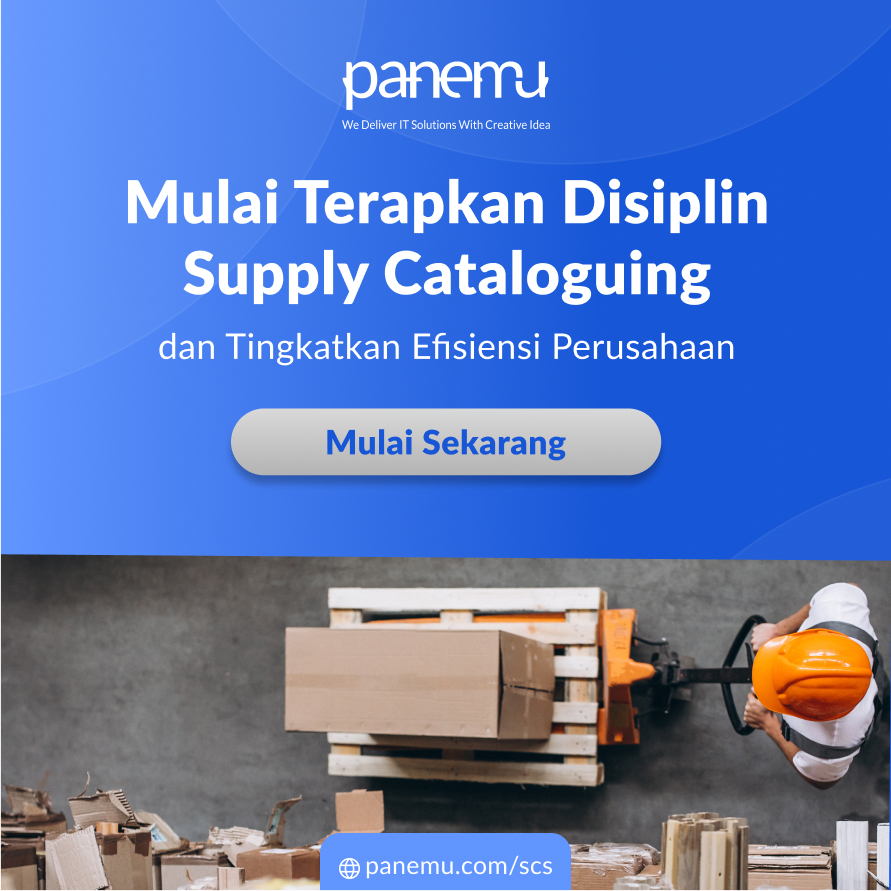Amidst the dynamics of an increasingly multi-layered and digital industry, Jakarta, as the center of gravity of the national economy, holds both significant challenges and opportunities in operational information management. Maintenance, Repair, and Operations (MRO) is the lifeblood of industrial productivity, but what if that pulse is disrupted by the complexity of disorganized material data? This is where transformation begins—not with new machines or sophisticated software, but with a robust and intelligent master data cataloging system.
MRO is more than just maintenance and repair activities, but rather a system that requires precision in decision-making. Material data is its foundation. In a large city like Jakarta, with its dense industrial, energy, logistics, and construction ecosystems, the need for information standardization is increasingly pressing.
Material Data: An Invisible But Critical Resource
Many companies don't realize that hundreds, even thousands of items in their warehouses lack clear data identities. Often:
- The same item has several different names
- Material description is incomplete or confusing
- There is no consistent classification system
This situation leads to waste, ordering errors, maintenance delays, and even business decisions based on incorrect data. Addressing these issues requires a master data cataloging system that combines technical, logistical, and digital approaches in an integrated manner.
From Data Entry to Data Strategy: The Evolution of Cataloguing
Cataloging is not just an administrative process, but an operational data strategy. In Jakarta, the heart of the corporation and the national distribution center, the cataloging structure must address the complexities across entities and systems.
Following are the foundations of a modern cataloging system:
- Material Data Audit and Diagnosis
The initial audit aims to map the current state of the data: identify duplication, inconsistencies, and gaps in technical descriptions. This stage creates a comprehensive understanding of the root causes of data issues. - Description Template Standardization
Using the Noun-Modifier-Attribute (NMA) approach and international standards such as UNSPSC and eCl@ss, data templates are designed to be operable in ERP, CMMS, and e-Procurement systems. - Material Codification
One of the most critical steps. In an ideal codification structure, material is given a unique, logical, and structured code. This is where concepts likeNATO Codification System (NCS)relevant — a global system that universally classifies items based on the NSN (NATO Stock Number) structure. While not always fully implemented in the civilian sector, NCS principles such as item category separation, unique serial numbers, and technical metadata are extremely useful for improving data accuracy and interoperability. - Data Enrichment and Validation
After codification, the data is enriched with technical attributes, dimensional parameters, and operational compatibility. Rich data enables accurate analytics and predictive maintenance. - Cross-System Integration and Internal Team Training
Standardized data is integrated into enterprise systems such as SAP, Maximo, or Oracle. This process includes training to ensure internal teams are equipped to maintain data consistency and quality on an ongoing basis.
Real Functionality: How MRO Cataloguing Works in Jakarta
Let's take a look at some functional use cases from the field in the Jakarta area:
- Public Transportation CompanyDifficulty identifying brake and electrical component parts scattered across multiple warehouses. After implementing cataloging, item search time decreased by 60% and procurement became more controlled.
- Construction Consortiumfaced a discrepancy between steel material descriptions in the field and in the ERP. The solution? NMA-based cataloging with the addition of a NATO Codification-based classification layer for heavy equipment, bolts, and work tools.
- Energy and Gas Distributorin the Jabodetabek area experienced inventory efficiency of 35% after adopting a standard catalog and integrated descriptive codification that is able to connect all storage locations.
Jakarta Needs a System, Not Just Systematization
What differentiates strategic cataloguing services is not just the tools, but the methods and approaches:
- Combining human expertise with AI and NLP for fast validation and semantic classification
- Cross-disciplinary team: engineers, data analysts, supply chain specialists
- Use of universal classification methods that can be adapted locally (such as NCS and eCl@ss)
- Support in the form of ongoing training and SOP documentation
Cataloguing is not a one-time project, but rather a process of changing the company's data culture.
When Should Your Company in Jakarta Start?
When you:
- Feeling of repeated waste from the procurement system
- Often choose the wrong spare parts because the description is inaccurate
- Finding messed up master data during ERP system migration
- Loss of time due to long item searches
So cataloguing is the answer, not the cost.
Now, the question is not "Does your company need cataloguing?", but "How much longer are you willing to lose efficiency because your data is not under control?"
Panemu presents servicesCataloguing ServiceDesigned not just to organize data, but to build a robust material information system ready for the digital industrial era. With a consultative approach, intelligent technology, and experience across various industry sectors, we are here to turn your data into a strategic instrument.
Learn more at https://panemu.com/cataloguing-serviceand see how the featured featuresSaved Cataloguing System (SCS)can change the way you manage, understand, and optimize your company's materials.
Visit https://panemu.com/scs-key-featureto get to know the digital features that are ready to accelerate the digitalization of your MRO.
Because in Jakarta — the national business, logistics, and industrial center — those who can manage data with precision will lead the competition.

